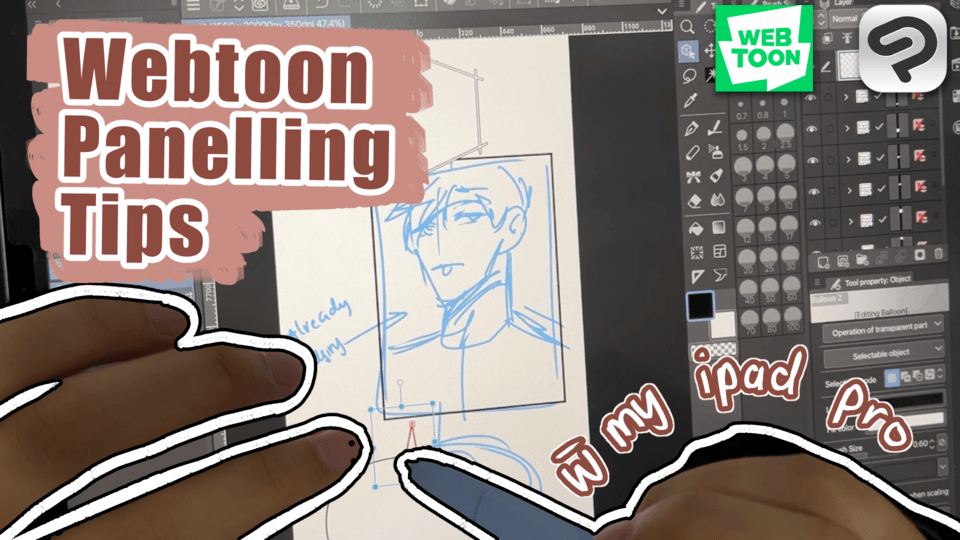How to Turn a Photo Into a Digital Painting | Journal Lily
Hi there! I´m Lily, today I want to share with you how to transform a photo into a paint with help of the blurring tools that you can find predetermined in Clip Studio Paint. I hope these can help you, so stick around and let´s do it!
The first step is to import from ‘‘ File object ’’ the image you want to work with. We will start by fixing its size in a corner of the canvas, to use as a reference and we´ll create a dedicated layer to extract a color palette from it.
For this, we´ll use the eyedropper with which you will take each color that you consider necessary, don´t limit yourself to a small spectrum, but remember that later by blurring you will be able to obtain the proper mixtures.
The grid is a trick that I use to not lose the proportions of the image, it´s about drawing lines to section the image and find figures such as circles, squares, and triangles, that helps to determine areas and then transfer them to the canvas and place them correctly.
To be totally ready it´s necessary to select our work tools, use a paper according to the technique or material you chose, to give a slightly more realistic effect. Try not to use more than two or three brushes per area, numbering and choosing them previously make easier the process.
For the colorization, I use the eyedropper to select the color that we need to transfer to its corresponding area, with the brush that we choose we will place each color respecting lights and shadows without overloading the space since if is necessary you can add color later.
In this case, I´m using watercolor brushes, so the 'tempera mixer' will be very useful to blur the material, regardless of the technique you should always follow the shape of the object when blurring, draw long strokes if the area requires it, and in spaces where the color is concentrated as in the shadows, use short strokes and even small touches to not to get an unwanted effect on the volume.
At the end of the colorization base, it's time to give texture to our painting, use brushes that imitate the characteristics of your image, with the marquee tool select the area where you are going to apply the color. I will use brush number 5, with the eyedropper I select the base color, increase its tone and add the color with small touches.
For the central part of the flower I´ll repeat the previous process, this time I apply the color with the brush 'running color edge watercolor' the eyedropper help me to transfer the colors, and then blur them with the 'tempera mixer' .
To finish the second color layer, I use the color mixer in the blend tool section.
Unlike the petals that seem more poures, the center looks brighter and smoother, to give this effect I use brush number 8 from my list of tools, the ink is pretty runny so I'll use three shades only at the extreme of the area and with the ‘wet mix’ tool I will begin to blur first by joining the ink to the color base and then dragging it towards the center with individual lines.
The trick is to respect the shape and use tools that complement each other, depending on the type of paint is the blender you should use: dry-dry, wet in liquid, you can get the most out of them when they work together.
The marquee tool will allow you not to leave the edges, if this happens due to the characteristics of the brush, you can invert the selected area and thus erase what is left without affecting the previous one.
To finish I will use brush number 7 to create the texture of the pistil of the flower, and I´ll add details such as the outline and paint droplets around it.
And that's all! I hope it has been useful, you can visit my YouTube Channel: Journal Lily if you want to take a look at the video tutorial to get these tips a little more detailed. Remember don´t give up and always try! See you...
https://www.youtube.com/watch?v=9hsE5CNhr4U















Comment